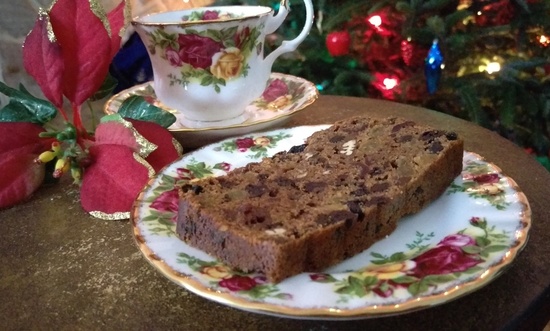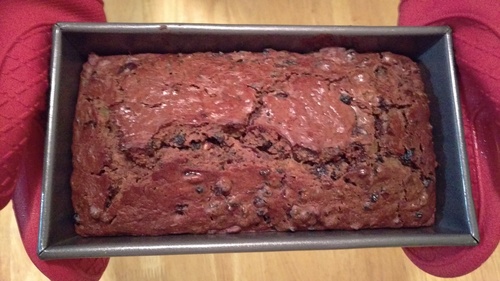
I hate to break it to you, but you’ve probably never had a truly delicious fruitcake before in your life. There’s a reason that fruitcake is a joke and most people hate it, because what has been passed off as fruitcake for roughly the last 80 years is so awful that it shouldn’t be called fruitcake! That cloyingly sweet dense block of glow-in-the-dark neon frankenfruit would give anybody a sore jaw and a stomach ache. This recipe is not that!
Fruitcake has not always been this way. The honorable fruitcake traces its origins to the Middle Ages when European farmers needed a way to preserve fruits through the winter, so they would sun-dry the fruits and bake them into a bread. Sugar was hard to come by in those days, so the sweetness only came from the fruits themselves, or some honey if available. Alcohol was added due to its ability to preserve the cake. Fruitcake has many variations and many names: plum pudding, Christmas cake, Dundee cake, stollen, winterbrot, barmbrack, keks, to name a few.
What most of us in North America know as fruitcake traces back to some southern bakers who massed-produced mail-order cakes with easy access to cheap nuts (which led to the expression “nutty as a fruitcake”). Their liberal use of sub-par, neon colored glacé fruits & citrus peels, and excessive quantities of sugar and molasses, will give anybody a stomach ache just by looking at it. Like the rest of us, I grew up hating fruitcake.
About ten years ago I began, mostly out of curiosity, to experiment with fruit cakes, digging up old family recipes and archaic British cookbooks. I quickly figured out that those glacé fruits that always pop up at the supermarkets in November needed to be eliminated. Glacé is the French word for glazed, and refers to fruits that are preserved in a sugar syrup and then further glazed or candied with syrup. Horrible stuff. I went back to what our ancestors ate: sun dried fruit.
Nearly 10 years of experimentation and refinement, I am sharing with you my recipe for this truly delicious fruitcake. Unfortunately the word fruitcake has been tainted and its not easy to get new people to try it, but I have systematically converted the most staunch haters of fruitcake to now love this recipe. I’ve even been told that I should sell it mail-order (not that again!).
This isn’t the easiest recipe to make, and its not the cheapest. Quality ingredients are vital, and it takes a bit of time and attention to do it right. We want to use entirely natural ingredients, sun dried fruits, fresh spices, honey for sweetness, and quality spirits (rum and brandy). Although we use alcohol, this truly delicious fruitcake doesn’t have even a hint of “booziness” — all of the alcohol will cook and evaporate off.
I suggest that you make this a few weeks before you intend to eat it. By aging it for a couple of weeks the flavors will enhance considerably. Spritzing it with brandy or wrapping in a brandy soaked linen will preserve it for years. (Note: A fruitcake baked in 1878 is being kept by a family in Michigan and is still edible.) I have aged this fruitcake for as much as a year and it was magnificent. If you give this as a gift, be sure to explain to the recipient how lucky they are.

Some fun Holiday Traditions which you may want to incorporate into the making of the fruitcake, which goes back to Jolly Olde England:
- when you are mixing the batter, everybody in the family must grab a hold of the wooden spoon and give it a stir together; brings luck to the family for the coming year.
- put a silver coin* in the batter; whoever finds it gets good luck in the coming year. If you chose to do this custom I would urge you to visit a rare coin shop for a solid silver coin, as modern coins are not made with silver and may not bake well (or be food safe).
- put a silver thimble* in the batter; if a bachelorette finds it she will remain a bachelorette for the coming year. As with the dime above, use a pure silver thimble.
- put a silver button* in the batter; if a bachelor find it he will remain a bachelor for the coming year. As above, use a silver button.
*Legal disclaimer: baking metal objects into your cakes may not be safe, may be a choking hazard, and you do so at your own risk. Mommy Perfect and its associates are not responsible for any health consequences that may arise from use of these ancient holiday traditions. These are included here for entertainment and informational purposes only. Use at your own risk.